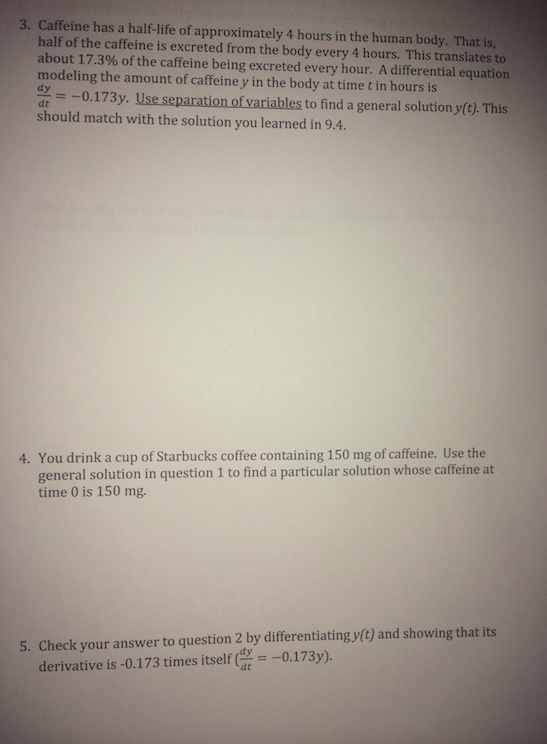

This helps confirm the half-life we got earlier with the table.Īnother confirmation method is to plug x = 6 into the equation There is also synthetic (man-made) caffeine, which is added to some medicines, foods, and drinks. Cacao pods, which are used to make chocolate products. Kola nuts, which are used to flavor soft drink colas. Plug in y = 5 and use logs to isolate the exponent var caffeineresult (initialamount) Math.pow(0.5, (totaltime / 5.5)) // half life formula. Caffeine is a bitter substance that occurs naturally in more than 60 plants including: Coffee beans. Recommendations for caffeine levels are for 18 years of age or over. For a single dose, health authorities recommended that you consume no more than 200 mg of caffeine at one time. Half-life is the amount of time it takes for a quantity of a substance. We could guess-and-check by plugging in random values of x to see if we get y = 5. How Do You Calculate Daily Safe Maximum We’ve used the latest research to determine the appropriate amount of daily caffeine. How long symptoms last According to the American Academy of Sleep Medicine, caffeine’s half-life is up to 5 hours.

Where 1/2 = 0.5 represents the multiplier indicating a 50% reduction Y = amount of caffeine left over in the bloodstream This happens after 6 half-lives have occurred. The table shows at time 30 hours, there's exactly 5 mg of caffeine left in the bloodstream. The time value is in hours, and the amount represents the amount of caffeine in mg. We keep dividing the amount in half and keep track how much time has passed by (along with the number of half-lives)Ī table is useful for this sort of thing. All drugs metabolize differently in different people. Then you'll have 160/2 = 80 mg after another 5 hours (5+5 = 10 total so far) Some drugs (notably alcohol and THC) cannot be accurately modeled this way. The general formula (using rational exponents) is: AC(0.5)kt where: t. If you started with 320 mg of caffeine, then you'll have 320/2 = 160 mg of caffeine after 5 hours. This means that half of the caffeine intake will still be in your system after 5.7 hours. Every 5 hours, the amount of caffeine is reduced by half. The phrasing "is reduced by 50%" is the same as "reduced by half". The central nervous system does not seem to develop a great tolerance to the effects of caffeine although dependence and withdrawal symptoms are reported.You can put this solution on YOUR website! However, children in general do not appear more sensitive to methylxanthine effects than adults. If you had 1 cup of coffee 9 hours ago how much is left in your system 9 hours the amount. Caffeine exerts obvious effects on anxiety and sleep which vary according to individual sensitivity to the methylxanthine. Example: The half-life of caffeine in your body is about 6 hours. The effects of caffeine on learning, memory, performance and coordination are rather related to the methylxanthine action on arousal, vigilance and fatigue. Its psychostimulant action on man is, however, often subtle and not very easy to detect. The methylxanthine induces dose-response increases in locomotor activity in animals. Many of the alerting effects of caffeine may be related to the action of the methylxanthine on serotonin neurons. Caffeine activates noradrenaline neurons and seems to affect the local release of dopamine.

Caffeine increases energy metabolism throughout the brain but decreases at the same time cerebral blood flow, inducing a relative brain hypoperfusion. The only likely mechanism of action of the methylxanthine is the antagonism at the level of adenosine receptors. Mobilization of intracellular calcium and inhibition of specific phosphodiesterases only occur at high non-physiological concentrations of caffeine. Three main mechanisms of action of caffeine on the central nervous system have been described. What is Half-life Calculation Formula in Exponential Decay An exponential. Caffeine is the most widely consumed central-nervous-system stimulant. Caffeine Half-Life Calculator This is a tool to calculate approximately how.


 0 kommentar(er)
0 kommentar(er)
